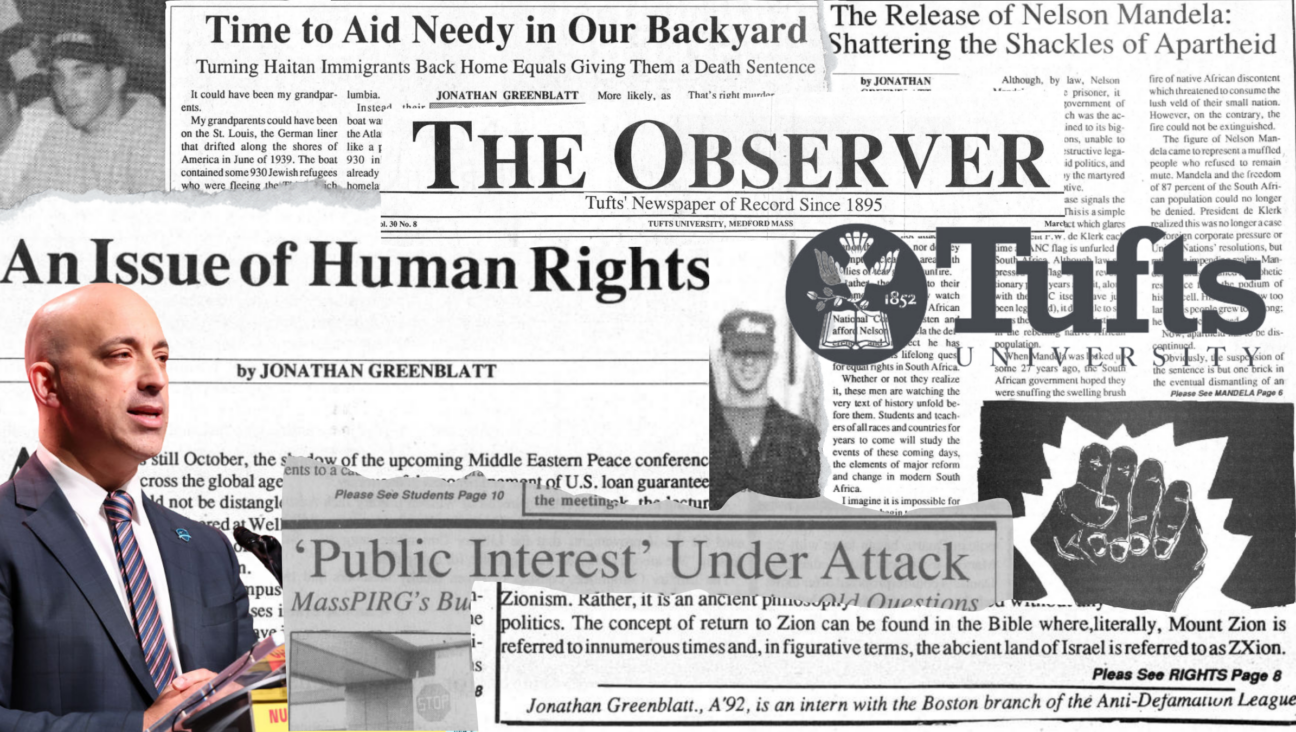Why I’m Paying $120 To See Rush

Rock Gods: The Canadian trio are the heroes of nerds and inspirers of untold air drum solos. Image by Getty Images
The Canadian prog/hard rock trio Rush — performers of epic, ridiculously complex songs, heroes of nerds and inspirers of air drum solos — have announced that their upcoming spring and summer tour will “most likely be their last major tour of this magnitude.”
The one and only time I’ve seen the band (fronted by Geddy Lee, who by all accounts is the nicest agnostic Jew in hard rock) I was still in college. Bill Clinton was president and no one had yet heard of Monica Lewinsky. I loved the show, but somehow, life happened and I didn’t manage to see another — I’m a married father of two, so why would I plunk down $120 for two tickets to the Philadelphia show when I could use that money for day care or diapers?
Still, I was suckered in by the recent news that their show in Philly could be my last chance to see them; after all, they are in their 60s. What if they really are exiting stage left and giving up life on the road?
The Philly show won’t be a date night. You see, my wife can’t stand listening to the shrill, high-pitched voice of Geddy Lee (born Gary Lee Weinrib) for more than 30 seconds. She’s not alone. Anecdotally, it seems that nearly every woman I’ve ever met agrees with her. But if Lee’s take on rock and roll remains a refuge for outsiders, then Rush’s story is an outsider’s story, an immigrant story, and a Jewish story. Growing up in suburban Toronto, these guys were misfits and outcasts until they discovered music and each another. Lee is the child of Holocaust survivors. Lead guitarist, Alex Lifeson, is the child of Serbian immigrants who arrived shortly after World War II, and Neil Peart, the drummer and primary lyricist, grew up as the long-haired, gangly guy who always had a book open.
Lee’s mother’s experience in Bergen-Belsen inspired Rush’s most haunting work. As detailed in the 2010 documentary “Rush: Beyond the Lighted Stage,” Lee’s early years were shadowed by his parents’ ordeals, memories and sadness. A self-described nebbishy Jewish kid, Lee recounts that his was one of the few Jewish families around. His father, Morris Weinrib, died when he was 12; Lee spent the traditional year in mourning, going to synagogue before and after school, refraining from listening to music. Afterward, his mother, Mary Weinrib, offered to buy him any present he liked. He asked for a guitar.
In the film, Lee speaks of retreating into music as a way to escape the heaviness of his parents’ experiences and his father’s death. While he might have sought escape, by all accounts he and his band mates never descended into the hedonism that defines the rock and roll lifestyle. Lee’s “normal” persona stands in stark contrast to that of, say, Kiss’s leader Gene Simmons, whose mother, Flora Klein, was the only member of her family to survive the Holocaust. Lee, while an avowed agnostic, seems clearly to have been shaped by Jewish ethics. According to an article in Heeb Magazine, last year, when he and the other band members received an honorary doctorate in music from Nipissing University, he “cracked a joke about Jewish doctors, kvelled over his own son (an actual MD) and gave major props to his mom.”
I didn’t get turned onto Rush until college, long after the band’s heyday. At 19 or 20, I was moving away from the crazy idea that what I listened to defined who I was and that music was the only thing worth believing in. It was around this time that I began exploring Judaism, traveled to Israel, and truly internalized the truth that the world didn’t begin with my birth and that what was written in the Torah several thousand years ago was at least as important as what Eddie Vedder and Kurt Cobain had to say. Still, Neal Peart’s lyrics are always probing physical concepts such as the nature of reality as well as social constructs. Perhaps that is why I found solace in songs like “Freewill,” “Closer to the Heart,” “The Trees,” and “Time Stand Still” at a time when I was grappling with Jewish observance, even considering whether I wanted to spend the rest of my life in America or Israel.
Still, as someone who has spent most of his professional life writing about the Jewish community, I must profess a deep ambivalence about “Red Sector A.” This synth-heavy number that suggests a Pet Shop Boys-style song appeared on the band’s 1984 album “Grace Under Pressure” and alludes to Lee’s mother’s experiences in Bergen-Belsen. “I hear the sound of gunfire at the prison gate. Are the liberators here?” Lee sings.
Though I applaud the band for attempting to tackle the Holocaust and genocide, by failing to mention the word Jew or the name of the camp, the band somehow lessens the impact of Mary Weinrib’s experience. Art Spiegelman defined his career and redefined the comic book drama by telling his parents’ story in panel form. No one questions today whether the graphic novel is an appropriate forum to address the Holocaust. But 30 years after “Red Sector A,” it remains an open question as to whether popular music can convey the enormity of the Shoah.
But enough of the critic: I eagerly return to the more comfortable zone of fan. And this fan is very much looking forward to June. So when Rush takes the stage, when the guitars and drums kick in and all the middle-aged dudes in the audience start screaming, I just might have to mark the occasion in a special way and quietly recite the Shehecheyanu prayer. Something tells me that Lee, despite the fact that he doesn’t practice Judaism, might smile if he could hear me.
Bryan Schwartzman has received numerous journalism awards and a Pushcart Prize nomination for fiction. He lives in Philadelphia.

I hope you appreciated this article. Before you go, I’d like to ask you to please support the Forward’s award-winning journalism this Passover.
In this age of misinformation, our work is needed like never before. We report on the news that matters most to American Jews, driven by truth, not ideology.
At a time when newsrooms are closing or cutting back, the Forward has removed its paywall. That means for the first time in our 126-year history, Forward journalism is free to everyone, everywhere. With an ongoing war, rising antisemitism, and a flood of disinformation that may affect the upcoming election, we believe that free and open access to Jewish journalism is imperative.
Readers like you make it all possible. Right now, we’re in the middle of our Passover Pledge Drive and we still need 300 people to step up and make a gift to sustain our trustworthy, independent journalism.
Make a gift of any size and become a Forward member today. You’ll support our mission to tell the American Jewish story fully and fairly.
— Rachel Fishman Feddersen, Publisher and CEO
Join our mission to tell the Jewish story fully and fairly.
Only 300 more gifts needed by April 30
























